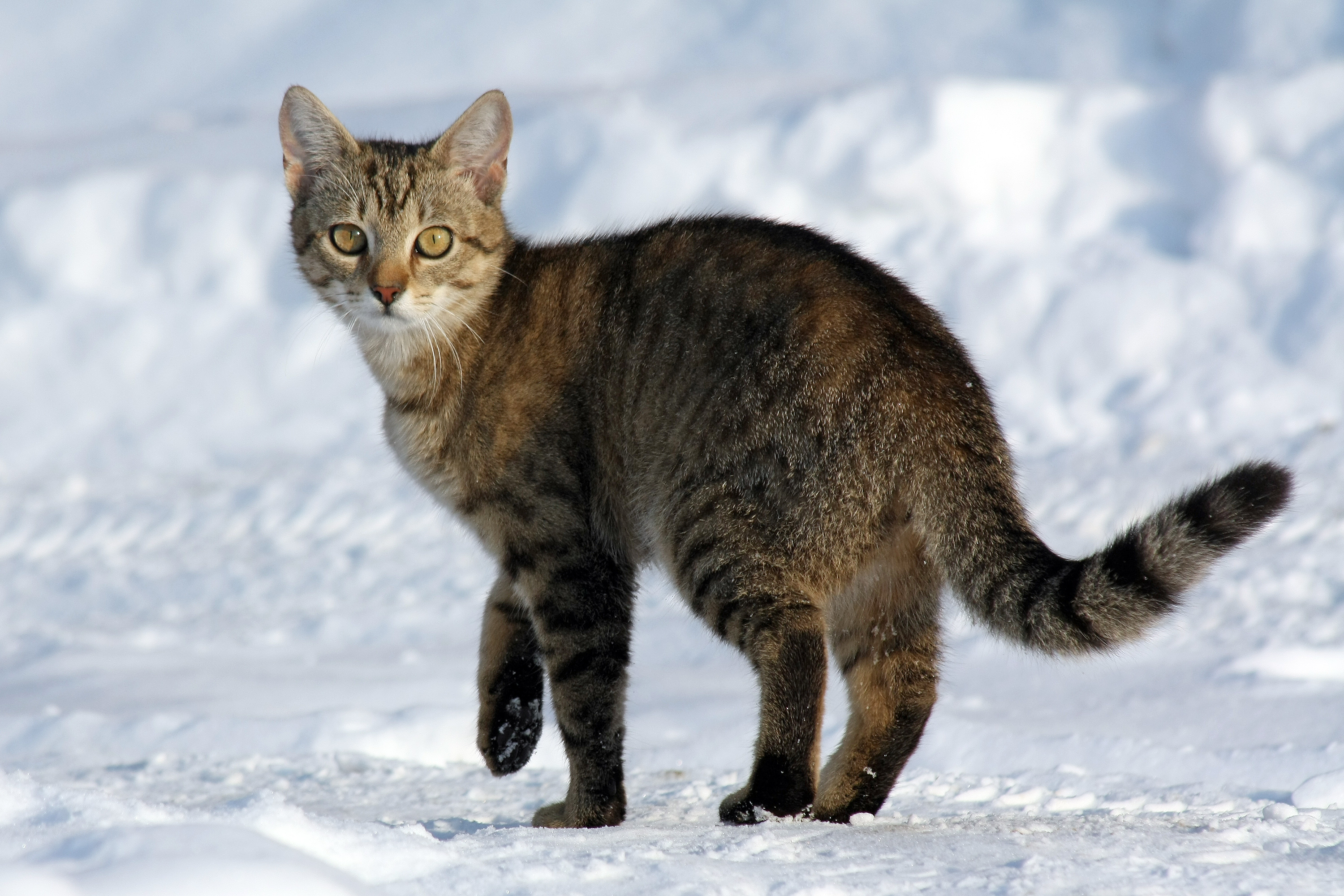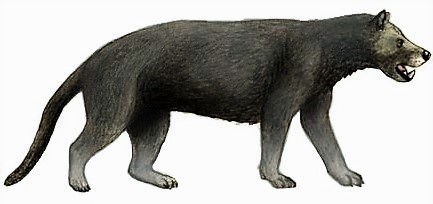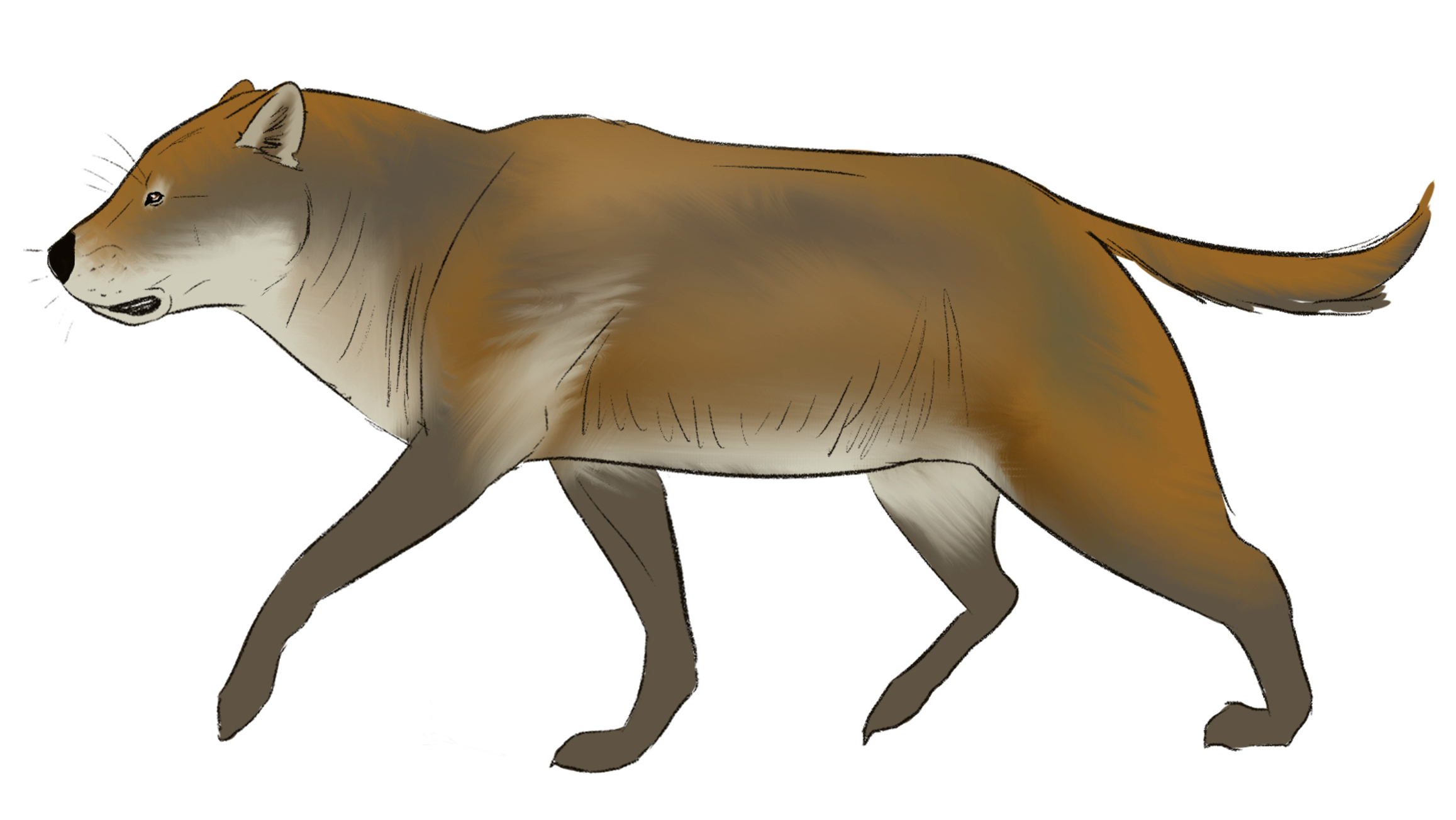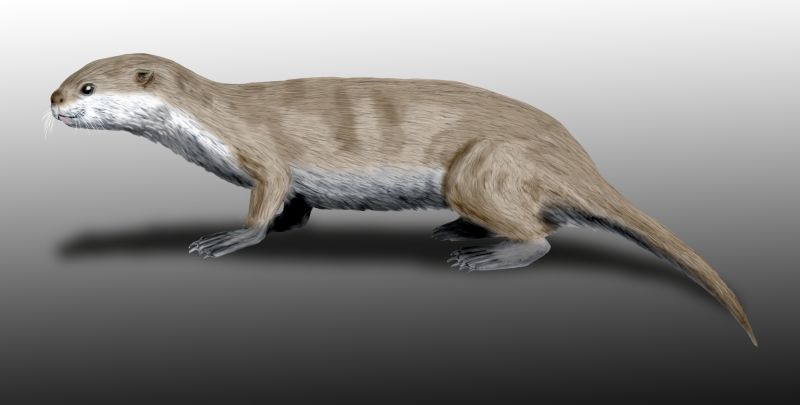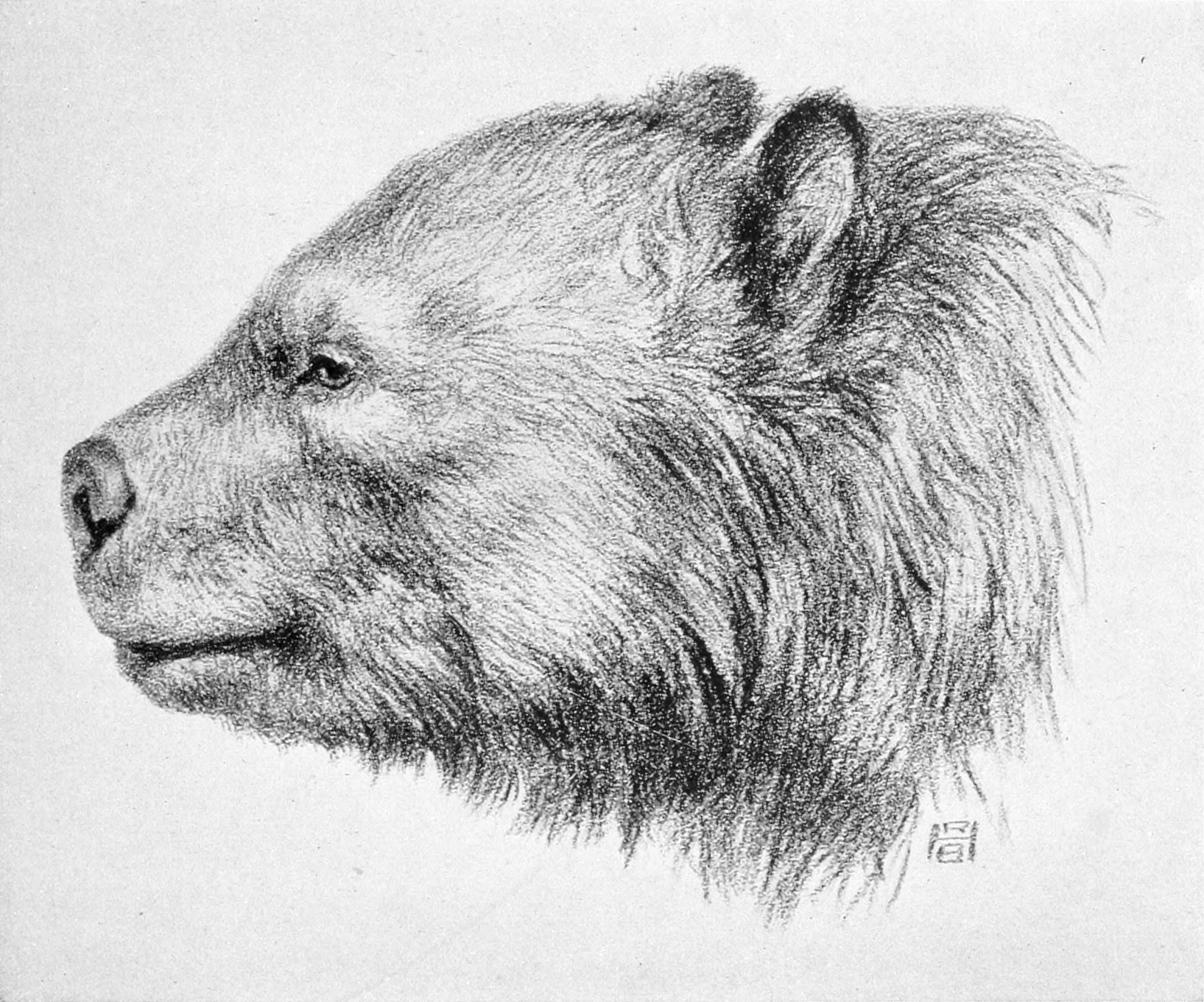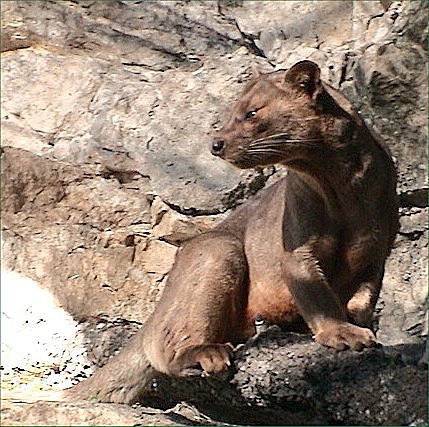|
Caniformia
Caniformia is a suborder within the order Carnivora consisting of "dog-like" carnivorans. They include Canidae, dogs (Wolf, wolves, foxes, etc.), bears, raccoons, and Mustelidae, mustelids. The Pinnipedia (pinniped, seals, walruses and sea lions) are also assigned to this group. The center of diversification for the Caniformia is North America and northern Eurasia. Caniformia stands in contrast to the other suborder of Carnivora, the Feliformia ("cat-like" carnivorans), the center of diversification of which was in Africa and United Nations geoscheme for Asia#Southern Asia, southern Asia. Description Most members of this group have nonretractile claws (the Fisher (animal), fisher, marten, sea otter (Forepaw, forepaws only), red panda, and Bassariscus astutus, ringtail, and some foxes have retractile or semi-retractile claws) and tend to be plantigrade (with the exception of the Canidae). Other traits that separate the Caniformia from the Feliformia is that caniforms have longer ja ... [...More Info...] [...Related Items...] OR: [Wikipedia] [Google] [Baidu] |
Carnivora
Carnivora ( ) is an order of placental mammals specialized primarily in eating flesh, whose members are formally referred to as carnivorans. The order Carnivora is the sixth largest order of mammals, comprising at least 279 species. Carnivorans are found on every major landmass and in a variety of habitats, ranging from the cold polar regions of Earth to the hyper-arid region of the Sahara Desert and the open seas. Carnivorans exhibit a wide array of body plans, varying greatly in size and shape. Carnivora are divided into two suborders, the Feliformia, containing the true felids and several animals; and the Caniformia, containing the true canids and many animals. The feliforms include the Felidae, Viverridae, hyena, and mongoose families, the majority of which live only in the Old World; cats are the only exception, occurring in the Old World and the New World, entering the Americas via the Bering land bridge. The caniforms include the Caninae, Procyonidae, bears, ... [...More Info...] [...Related Items...] OR: [Wikipedia] [Google] [Baidu] |
Arctoidea
Arctoidea is an Order (biology), infraorder of mostly Carnivore, carnivorous mammals which include the extinct Hemicyoninae, Hemicyonidae (dog-bears), and the extant Musteloidea (weasels, raccoons, skunks, red pandas), Pinniped, Pinnipedia (seals, sea lions), and Bear, Ursidae (bears), found in all continents from the Eocene, , to the present. The oldest group of the clade is the bears, as their CMAH gene is still intact. The gene became non-functional in the common ancestor of the Mustelida (the musteloids and pinnipeds). Arctoids are Caniformia, caniforms, along with dogs (canids) and extinct Bear dog, bear dogs (Amphicyonidae). The earliest caniforms were superficially similar to Marten, martens, which are tree-dwelling Mustelidae, mustelids. Together with Feliformia, feliforms, caniforms compose the order Carnivora; sometimes Arctoidea can be considered a separate suborder from Caniformia and a sister taxon to Feliformia. Systematics Arctoidea was named by Flower (1869). It wa ... [...More Info...] [...Related Items...] OR: [Wikipedia] [Google] [Baidu] |
Canidae
Canidae (; from Latin, ''canis'', "dog") is a family (biology), biological family of caniform carnivorans, constituting a clade. A member of this family is also called a canid (). The family includes three subfamily, subfamilies: the Caninae, and the extinct Borophaginae and Hesperocyoninae. The Caninae are known as canines, and include Dog, domestic dogs, Wolf, wolves, coyotes, raccoon dogs, Fox, foxes, jackals and other species. Canids are found on all continents except Antarctica, having arrived independently or accompanied by Human, human beings over extended periods of time. Canids vary in size from the gray wolf to the fennec fox. The body forms of canids are similar, typically having long muzzles, upright ears, teeth adapted for cracking bones and slicing flesh, long legs, and bushy tails. They are mostly social animals, living together in family units or small groups and behaving co-operatively. Typically, only the dominant pair in a group breeds and a litter of young ... [...More Info...] [...Related Items...] OR: [Wikipedia] [Google] [Baidu] |
Bear
Bears are carnivoran mammals of the family (biology), family Ursidae (). They are classified as caniforms, or doglike carnivorans. Although only eight species of bears are extant, they are widespread, appearing in a wide variety of habitats throughout most of the Northern Hemisphere and partially in the Southern Hemisphere. Bears are found on the continents of North America, South America, and Eurasia. Common characteristics of modern bears include large bodies with stocky legs, long snouts, small rounded ears, shaggy hair, plantigrade paws with five nonretractile claws, and short tails. While the polar bear is mostly carnivorous, and the giant panda is mostly herbivorous, the remaining six species are omnivorous with varying diets. With the exception of courtship display, courting individuals and mothers with their young, bears are typically solitary animals. They may be diurnality, diurnal or nocturnal and have an excellent sense of smell. Despite their heavy build and awk ... [...More Info...] [...Related Items...] OR: [Wikipedia] [Google] [Baidu] |
Pinnipedia
Pinnipeds (pronounced ), commonly known as seals, are a widely distributed and diverse clade of carnivorous, fin-footed, semiaquatic, mostly marine mammals. They comprise the extant families Odobenidae (whose only living member is the walrus), Otariidae (the eared seals: sea lions and fur seals), and Phocidae (the earless seals, or true seals), with 34 extant species and more than 50 extinct species described from fossils. While seals were historically thought to have descended from two ancestral lines, molecular evidence supports them as a monophyletic group (descended from one ancestor). Pinnipeds belong to the suborder Caniformia of the order Carnivora; their closest living relatives are musteloids (weasels, raccoons, skunks and red pandas), having diverged about 50 million years ago. Seals range in size from the and Baikal seal to the and southern elephant seal. Several species exhibit sexual dimorphism. They have streamlined bodies and four limbs that are modifi ... [...More Info...] [...Related Items...] OR: [Wikipedia] [Google] [Baidu] |
Pinniped
Pinnipeds (pronounced ), commonly known as seals, are a widely range (biology), distributed and diverse clade of carnivorous, fin-footed, semiaquatic, mostly marine mammals. They comprise the extant taxon, extant families Odobenidae (whose only living member is the walrus), Otariidae (the eared seals: sea lions and fur seals), and Phocidae (the earless seals, or true seals), with 34 extant species and more than 50 extinct species described from fossils. While seals were historically thought to have descended from two ancestral lines, molecular phylogenetics, molecular evidence supports them as a monophyletic group (descended from one ancestor). Pinnipeds belong to the suborder Caniformia of the order Carnivora; their closest living relatives are musteloids (Mustelidae, weasels, Procyonidae, raccoons, skunks and red pandas), having diverged about 50 million years ago. Seals range in size from the and Baikal seal to the and southern elephant seal. Several species exhibit ... [...More Info...] [...Related Items...] OR: [Wikipedia] [Google] [Baidu] |
Lycophocyon
''Lycophocyon'' is an extinct genus of caniformian carnivoran from Middle Eocene (early Duchesnean and possibly late Uintan NALMA) deposits of San Diego County, California. ''Lycophocyon'' is known from the holotype UCMP 85202, a partial left and right dentary. Paratypes include UCMP 170713, SDSNH 107658, SDSNH 107659, SDSNH 107442, SDSNH 107443 and SDSNH 107444, partial dentaries, mandibles and other cranial remains, and SDSNH 107446 and SDSNH 107447, cranial and postcranial fragments. Many additional specimens are also known. All specimens were collected from numerous localities, all of them from the upper portions of "member C" of the Santiago Formation. It was first named by Susumu Tomiya in 2011 and the type species is ''Lycophocyon hutchisoni''. The generic name means "twilight dog" in Greek, in references to its occurrence on the west coast of North America, and its affinity to the Caniformia. The specific name honours the paleontologist J. Howard Hutchison. Phylo ... [...More Info...] [...Related Items...] OR: [Wikipedia] [Google] [Baidu] |
Mustelidae
The Mustelidae (; from Latin , weasel) are a diverse family of carnivora, carnivoran mammals, including weasels, badgers, otters, polecats, martens, grisons, and wolverines. Otherwise known as mustelids (), they form the largest family in the suborder Caniformia of the order (biology), order Carnivora with about 66 to 70 species in nine subfamilies. Variety Mustelids vary greatly in size and behaviour. The smaller variants of the least weasel can be under in length, while the giant otter of Amazon rainforest, Amazonian South America can measure up to and sea otters can exceed in weight. Wolverines can crush bones as thick as the femur of a moose to get at the Bone marrow, marrow, and have been seen attempting to drive bears away from their kills. The sea otter uses rocks to break open shellfish to eat. Martens are largely arboreal, while European badgers dig extensive tunnel networks, called setts. Only one mustelid has been domesticated; the ferret. Tayra are also kept ... [...More Info...] [...Related Items...] OR: [Wikipedia] [Google] [Baidu] |
Ursidae
Bears are carnivoran mammals of the family (biology), family Ursidae (). They are classified as caniforms, or doglike carnivorans. Although only eight species of bears are extant, they are widespread, appearing in a wide variety of habitats throughout most of the Northern Hemisphere and partially in the Southern Hemisphere. Bears are found on the continents of North America, South America, and Eurasia. Common characteristics of modern bears include large bodies with stocky legs, long snouts, small rounded ears, shaggy hair, plantigrade paws with five nonretractile claws, and short tails. While the polar bear is mostly carnivorous, and the giant panda is mostly herbivorous, the remaining six species are omnivorous with varying diets. With the exception of courtship display, courting individuals and mothers with their young, bears are typically solitary animals. They may be diurnality, diurnal or nocturnal and have an excellent sense of smell. Despite their heavy build and awk ... [...More Info...] [...Related Items...] OR: [Wikipedia] [Google] [Baidu] |
Feliformia
Feliformia is a suborder within the order Carnivora consisting of "cat-like" carnivorans, including Felidae, cats (large and small), hyenas, mongooses, viverrids, and related taxa. Feliformia stands in contrast to the other suborder of Carnivora, Caniformia consisting of "dog-like" carnivorans (includes Canoidea). The separation of the Carnivora into the broad groups of feliforms and caniforms is widely accepted, as is the definition of Feliformia and Caniformia as suborders (sometimes superfamilies). The classification of feliforms as part of the Feliformia suborder or under separate groupings continues to evolve. Systematic classifications dealing with only extant taxa include all feliforms into the Feliformia suborder, though variations exist in the definition and grouping of families and genera.Taxonomic references - extant species (1): Supporting descriptive information and picturesDiversity Web (online) – Feliformia/ref>Taxonomic references - extant species (2)Integrated ... [...More Info...] [...Related Items...] OR: [Wikipedia] [Google] [Baidu] |
Ailuridae
Ailuridae is a family in the mammal order Carnivora. The family consists of the red panda (the sole living representative) and its extinct relatives. Georges Cuvier first described ''Ailurus'' as belonging to the raccoon family in 1825; this classification has been controversial ever since. It was classified in the raccoon family because of morphological similarities of the head, colored ringed tail, and other morphological and ecological characteristics. Somewhat later, it was assigned to the bear family. Molecular phylogenetic studies had shown that, as an ancient species in the order Carnivora, the red panda is relatively close to the American raccoon and may be either a monotypic family or a subfamily within the procyonid family. An in-depth mitochondrial DNA population analysis study stated: "According to the fossil record, the Red Panda diverged from its common ancestor with bears about 40 million years ago." With this divergence, by comparing the sequence difference ... [...More Info...] [...Related Items...] OR: [Wikipedia] [Google] [Baidu] |
Sea Lion
Sea lions are pinnipeds characterized by external ear flaps, long foreflippers, the ability to walk on all fours, short and thick hair, and a big chest and belly. Together with the fur seals, they make up the family Otariidae, eared seals. The sea lions have six extant and one extinct species (the Japanese sea lion) in five genera. Their range extends from the subarctic to tropical waters of the global ocean in both the Northern and Southern Hemispheres, with the notable exception of the northern Atlantic Ocean. Sea lions have an average lifespan of 20–30 years. A male California sea lion weighs on average about and is about long, while the female sea lion weighs and is long. The largest sea lions are Steller's sea lions, which can weigh and grow to a length of . Sea lions consume large quantities of food at a time and are known to eat about 5–8% of their body weight (about ) at a single feeding. Sea lions can move around in water and at their fastest they ... [...More Info...] [...Related Items...] OR: [Wikipedia] [Google] [Baidu] |

